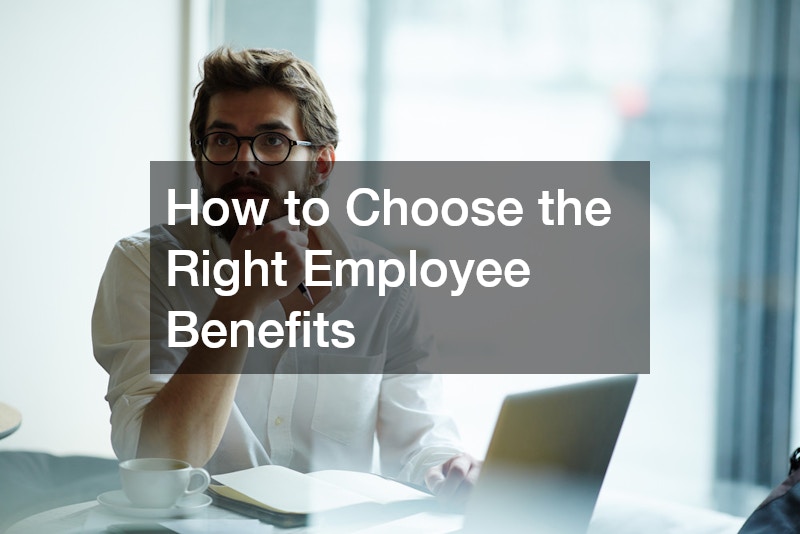
Having the right employee benefits can make a major difference in how supported you feel at work and how balanced your life is outside of it. In the past, most companies offered the same standard benefits to everyone, leaving little room for personalization. Today, more employers are moving toward flexible employee benefits, giving individuals the freedom to choose options that match their lifestyles and priorities.
If you’re exploring these programs or considering how to use them, it helps to understand what flexible benefits are, how they work, and how you can maximize their value. Below is a practical guide to help you make the most of these opportunities.
Know What Matters Most to You
Before exploring the available options, it’s essential to take a step back and consider your personal needs and goals. Flexible benefits are designed to give you choices, but those choices only matter if you know what you value most.
For example, if you’re focused on wellness, you might prioritize benefits like gym memberships, mental health counseling, or nutrition programs. If you’re raising a family, child care support, parental leave, or flexible work arrangements may make the biggest impact. For those looking to advance their careers, professional development courses, certifications, or mentorship opportunities could be at the top of the list.
Start by making a short list of areas where you’d like more support. Think about your health, financial goals, family responsibilities, and career growth. By identifying your priorities first, you’ll be ready to choose benefits that add real value to your everyday life instead of picking options that sound good but don’t actually serve your needs.
Explore the Options Available
Once you’ve clarified your priorities, take time to review the benefits your employer offers. Flexible programs typically include a mix of core benefits that everyone receives—such as health coverage or retirement plans—and optional benefits you can customize.
Optional benefits might include things like:
-
Additional paid time off
-
Commuter or transportation support
-
Financial wellness resources
-
Pet care assistance
-
Wellness stipends for fitness or nutrition
-
Professional development or continuing education
This variety is what makes flexible benefits so valuable. You’re not stuck with a package that doesn’t fit your life. Instead, you can design a benefits package that matches your current stage of life.
If your employer works with a flexible employee benefits provider, you may even have access to an online platform that makes the selection process simple. These tools often let you compare benefits side by side, track what you’ve used, and make adjustments when needed. This convenience ensures you can stay in control of your benefits without feeling overwhelmed.
When exploring your options, keep in mind that your needs today may not be the same as your needs a year from now. For instance, you might care more about professional development early in your career but later want more family-related benefits. Flexible systems allow you to adapt as your life changes.
Use and Revisit Your Benefits Regularly
Choosing benefits is only the first step. To get the most out of them, you actually have to use what’s available. Many employees select perks during enrollment but forget to take advantage of them, leaving valuable resources untouched.
For example, if you have a wellness stipend, set reminders to use it for gym memberships, yoga classes, or nutrition counseling. If you’ve chosen professional development as a benefit, make time to enroll in courses or attend workshops. Even small perks, like commuter benefits or meal stipends, can make a noticeable difference in your day-to-day life if you remember to use them.
It’s also wise to revisit your benefits regularly—at least once or twice a year. Life changes quickly, and flexible programs are designed to evolve with you. Moving to a new city, starting a family, or adjusting your health and wellness goals may all shift what you need most from your benefits package. By checking in and updating your selections, you’ll always stay aligned with what’s most important.
If anything feels unclear, don’t hesitate to ask questions. HR representatives or the benefits provider can walk you through details and ensure you’re making informed decisions.
Flexible employee benefits put the power in your hands, allowing you to shape a package that supports your unique lifestyle and goals. By first identifying your priorities, exploring all the options available, and committing to using your benefits consistently, you can maximize the value of what’s being offered.
Whether your focus is health, family, career development, or lifestyle perks, flexible benefits are designed to adapt to your changing needs. Working with a flexible employee benefits provider also ensures you’ll have the tools and guidance to make the process easier and more effective.
Instead of treating benefits as an afterthought, approach them as an essential part of your work and life experience. The more intentional you are about choosing and using them, the more they’ll enhance your well-being and help you succeed both personally and professionally.




